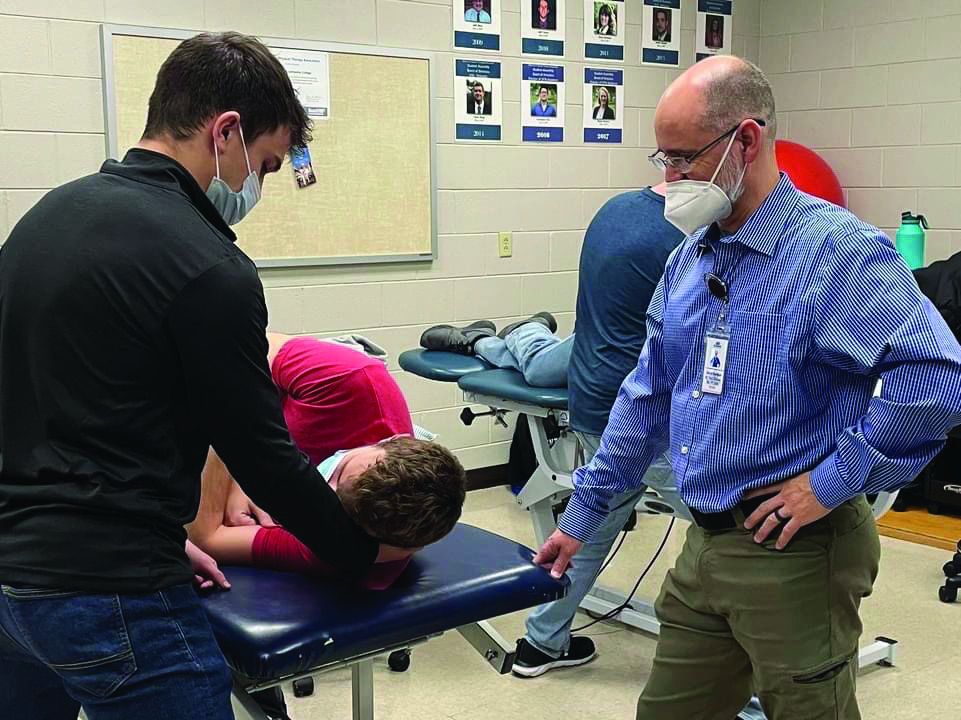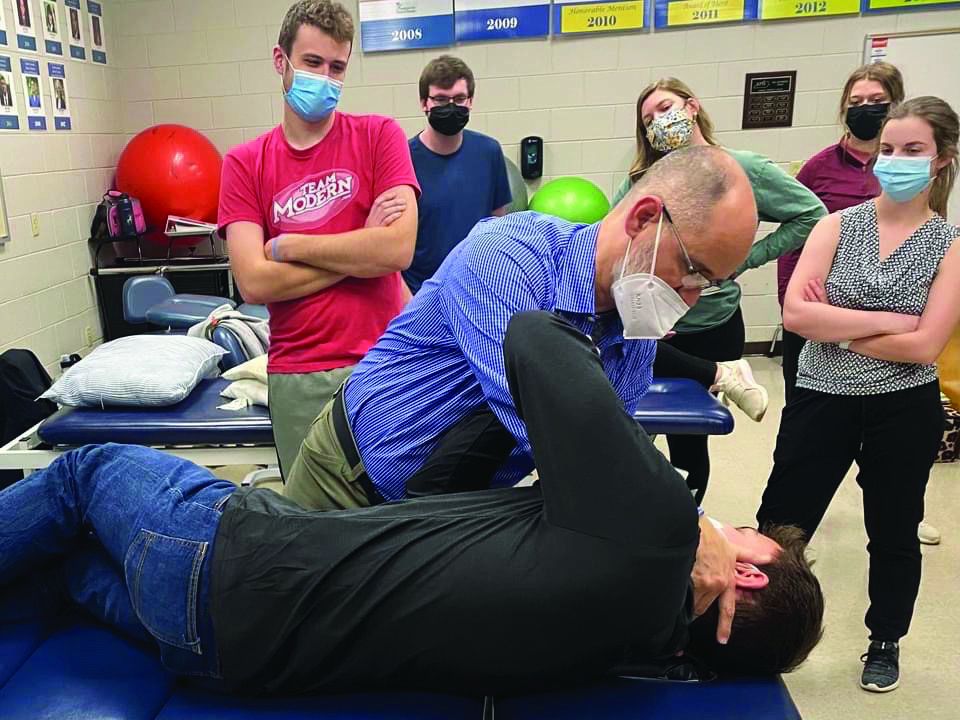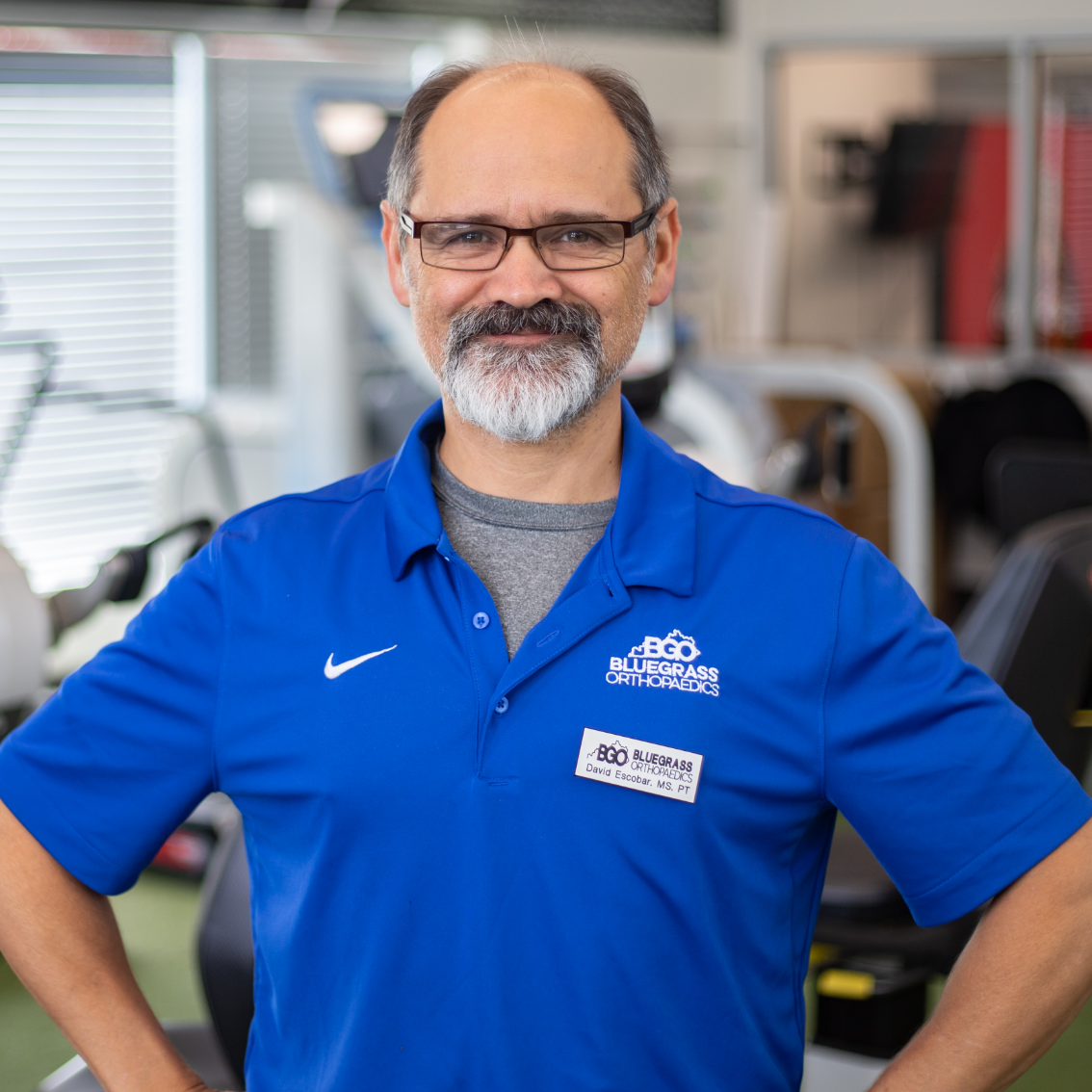Over
30 years ago while in PT school we studied the traditional Gross and Neuro
Anatomy classes with cadaver dissection labs, along with all the required rehab
courses for dealing with orthopaedic and neurological impairments. While I was
well aware of the structures and basic functions of the "vestibular cochlear
organ", there was no mention of "Vestibular Rehab" in the curriculum at that
time.
A
few years into practice I came across some over-copied drawings depicting what
I know now to be a type of "canalith repositioning". I asked other PT's about
this and they weren't certain either. It was said that an ENT or Audiologist
had developed a technique to reportedly reposition loose crystals in the inner
ear for dizziness. The technique seemed rather simplistic, and I doubted it
would actually do anything. A few years after that a physician asked if I did
"Vestibular Rehab"; since I was still unfamiliar with it, I feigned an answer
that was most likely not impressive nor satisfactory, especially because the
doctor's follow-up response was... "well so and so PT clinic across town does
vestibular rehab."
To that point in my career, I had concentrated most of my continuing education time and money on orthopaedic manual therapy courses, but I quickly realized there was a complete facet of the PT world that I didn't know existed. I began to seek out continuing education courses on "Vestibular" assessment and treatments.
Once I became well-versed in the treatment of conditions like BPPV (benign paroxysmal positional vertigo) and various other causes of vestibular dysfunction, I found that I had really opened a whole new category of treatments that I could offer my patients.


Vestibular dysfunctions ended up being far more common that I would have ever realized, affecting nearly all ages and genders from 'birth to the earth' as the saying goes. Infants can develop vestibular problems that may present as everything from upset stomach, developmental delay, low muscle tone, and torticollis.
Youth, especially school-age children and adolescents, may suffer vestibular complications due to head trauma. Surprisingly, the most likely to suffer this is not the popularized notion of an NFL player with CTE (chronic traumatic encephalopathy) but rather it is a teenage female soccer player.
Young adult through middle-age groups who suffer migraines often present with an overlay of simultaneous vestibular issues.
After the age of 50-60+, 'dizziness' rises to one of the top three most complained of issues at a normal doctor's office visit. 50% of individuals over the age of 70 will have experienced BPPV at least once.
BPPV is caused by loose calcium carbonate crystals that drift out of their anatomical holding containers known as the 'utricle or saccule'. Once these have leaked out into the canals, they will either excite or inhibit neural impulses that travel into the CNS. These signals erroneously convince the CNS that the head is turning, or moving through space, even though it is not. This can cause multiple problems--the two main issues being 1) nystagmus of the eye, and 2) balance issues.
Nystagmus is a rapidly beating eye toward the affected side (inner ear with the offending loose crystals) making vision very ineffective and causing the individual to feel suddenly violently dizzy and or nauseated.
Balance is a problem since the CNS is convinced that the head and body are falling or twisting toward one direction or another and it will reflexively send nerve impulses to the muscular system to counter by moving the body in an equal and opposite direction. So even though the person is sitting still, they feel they are falling to the one side. The body will actually fall over to the opposite side, risking further injury.
Since there can be so many causes of 'vertigo', it can be difficult to sort out, thus a quick and easy diagnosis is not the norm. Part of the frustration is that clients with BPPV will often have an average of 4 1⁄2 separate or different doctor visits before a condition is actually diagnosed.
Fortunately, there is a very effective treatment known as a 'Canalith Repositioning' maneuver that can be performed by a Dr, ENT, Audiologist, Physical Therapist, or Physical Therapist Assistant. Since there are three canals on each inner ear 1) horizontal, 2) posterior 3) anterior a.k.a. superior canal... there are several types of repositioning maneuvers to treat the appropriate or offending canal. Some of the more common tried and true maneuvers are known as the "Epley", "Seymont", or "Gans" which are all effective for treating the posterior and or anterior canal types of BPPV. The "Horizontal Roll" (a.k.a. barbeque or Lembert roll) is the treatment of choice to treat BPPV of the horizontal canal.
The condition of BPPV is effectively treated by a skilled handling of the head. The therapist can turn the canals into a plane of motion where gravity will easily act upon the loose otoliths (calcium carbonate crystals). The head is then carefully turned by the skilled hands of the therapist allowing the crystals to roll through the canals until they drop back into their appropriate holding locations.
The efficacy of the 1st repositioning treatment is known to eliminate BPPV by 85% (i.e. 15% may experience re-occurrence). The 2nd repositioning treatment if needed will effectively eliminate BPPV by 90% (i.e. 10% re-occurrence). A 3rd treatment has an efficacy of over 96% (4% may experience additional occurrences). Clients in this later group can be educated and/or their family members ) on performing self home reposition techniques. Clients who do not experience additional dizziness after their 1st or 2nd treatments should not require any additional repositioning treatments. Otherwise, visits may be spaced out once a week or so.
As with most topics in today's world there are an overabundance of social medial influencers and websites claiming to offer quick do-it-yourself solutions for pretty much any problem that one might face in the world. While there truly is a lot of great information available sorting though what is accurate, what is only partly helpful, or what works in one situation but not another is extremely risky. While there are videos reportedly describing how to perform you own 'crystal relocation/repositioning'… care must be taken to correctly identify the side that needs to be treated, and the correct technique must be performed specific to the offending inner ear. If one accidently self treated the wrong side or perhaps turned their head in the wrong direction at the wrong sequencing then the offending loose crystals may inadvertently pour into a completely separate canal system thus only prolonging the condition. Word to the wise… seek appropriate trained medical advice when your safety and balance is on the line.
In addition to BPPV (vertigo of a mechanical origin), many clients also suffer from a 'non-mechanically' induced vertigo (central vertigo) and some people suffer vertigo caused by a combination of both.
The 'non-mechanically induced' type of vertigo may be due to some of the following: exposure to toxic substances, prolonged exposure to IV antibiotics like gentamicin, certain chemotherapy drugs or radiation, certain chemicals in industrial cleaning solvents, jet propulsion fuels, and any type of medical condition that may decrease the perfusion of oxygen and nutrient rich blood flow to the vestibular organs or cranial n 8. This later situation could be the case with severe diabetes, circulatory disruption from CVA's, or head trauma where fractures of the part of the skull that contain the vestibular organs and or cranial n 8 may cut into or damage the delicate tissues of the vestibular system.
While physical therapy can improve the quality of life for individuals suffering from vertigo due to either categories (Mechanical vs Non-Mechanical), vertigo of a non-mechanical origin will require a more prolonged course of intervention. It involves gradually exposing the CNS to incrementally increasing doses of movements designed to stimulate the vestibular system to 'rewire' itself. The CNS is also known to re-route neural pathways after suffering damage due to CVA or trauma. These therapies will require treatments 2-3 day's per week for 6-12 weeks depending on severity. In addition the clients must follow a carefully designed home program for approx. 4-5 minutes, 4-5 times per day, every day.
For more information about dizziness or vertigo, feel free to reach out to David Escobar from the Brannon Crossing PT clinic.
About the Author:

David has been providing Physical Therapy for the south central region of KY for over 30 years. He has been teaching in the Physical Therapy Assistant program at SCC in various capacities since 1991. He has also served as a clinical instructor for student's internships from SCC, University of Kentucky, and Western Kentucky University DPT students. Specifically for the past 10+ years David has been spending a day each winter semester at SCC teaching the students how to perform canalith repositioning maneuvers for Benign Paroxysmal Positional Vertigo (BPPV) and various techniques for Vestibular Rehab. (shown in photos). Also most recently he has also helped teach some breakout sessions for the new PTA program at Maysville Community College.
